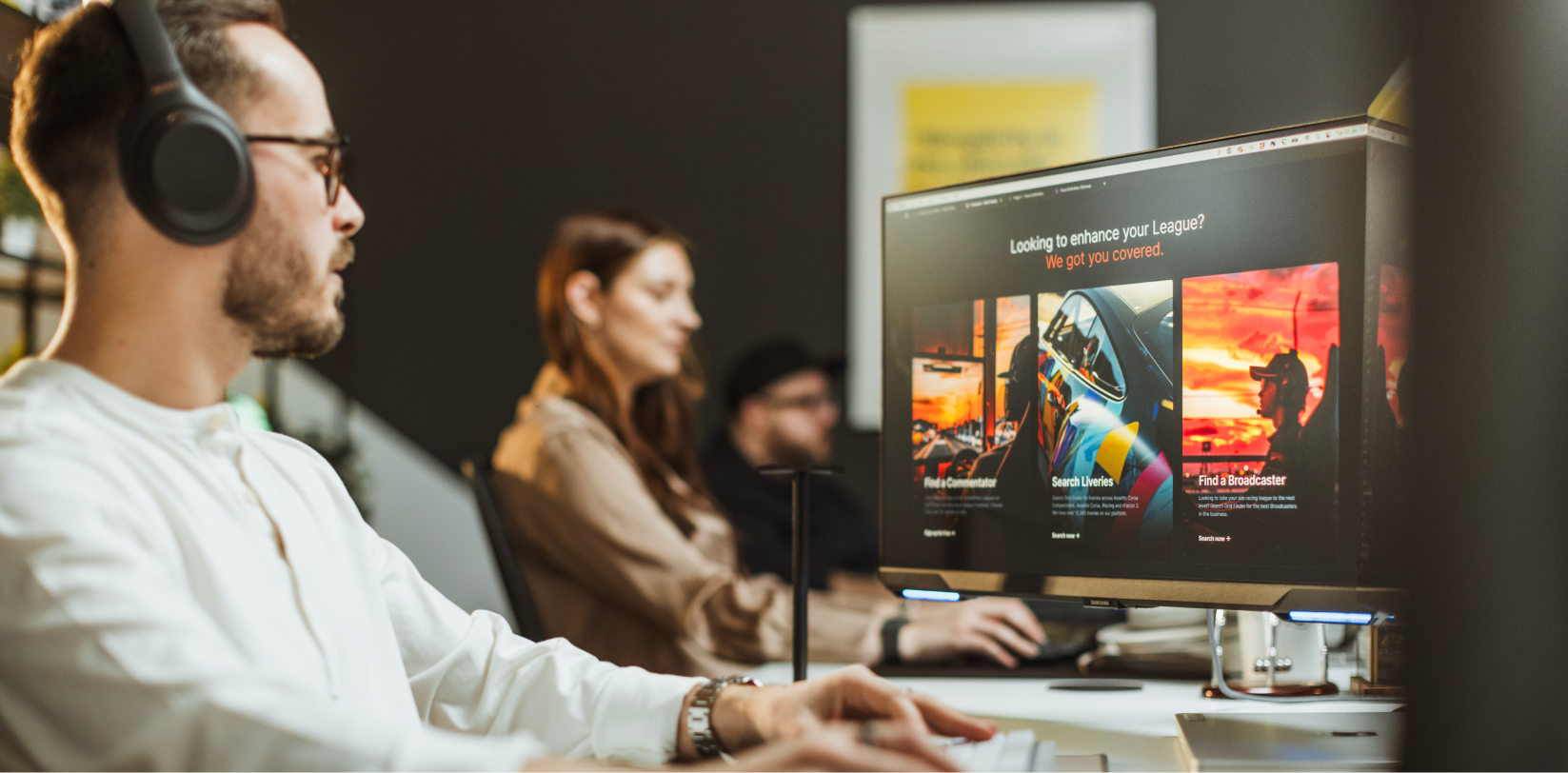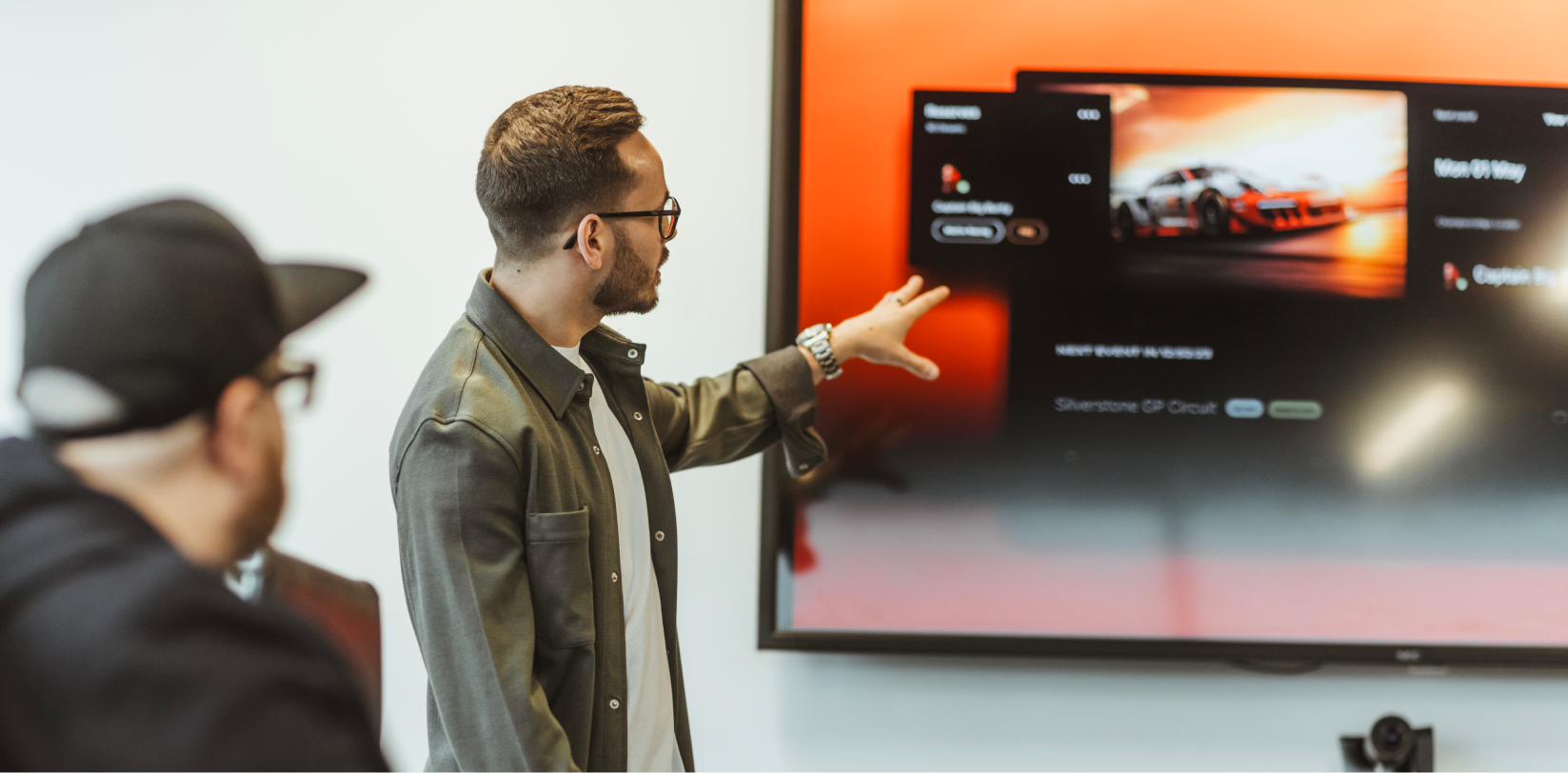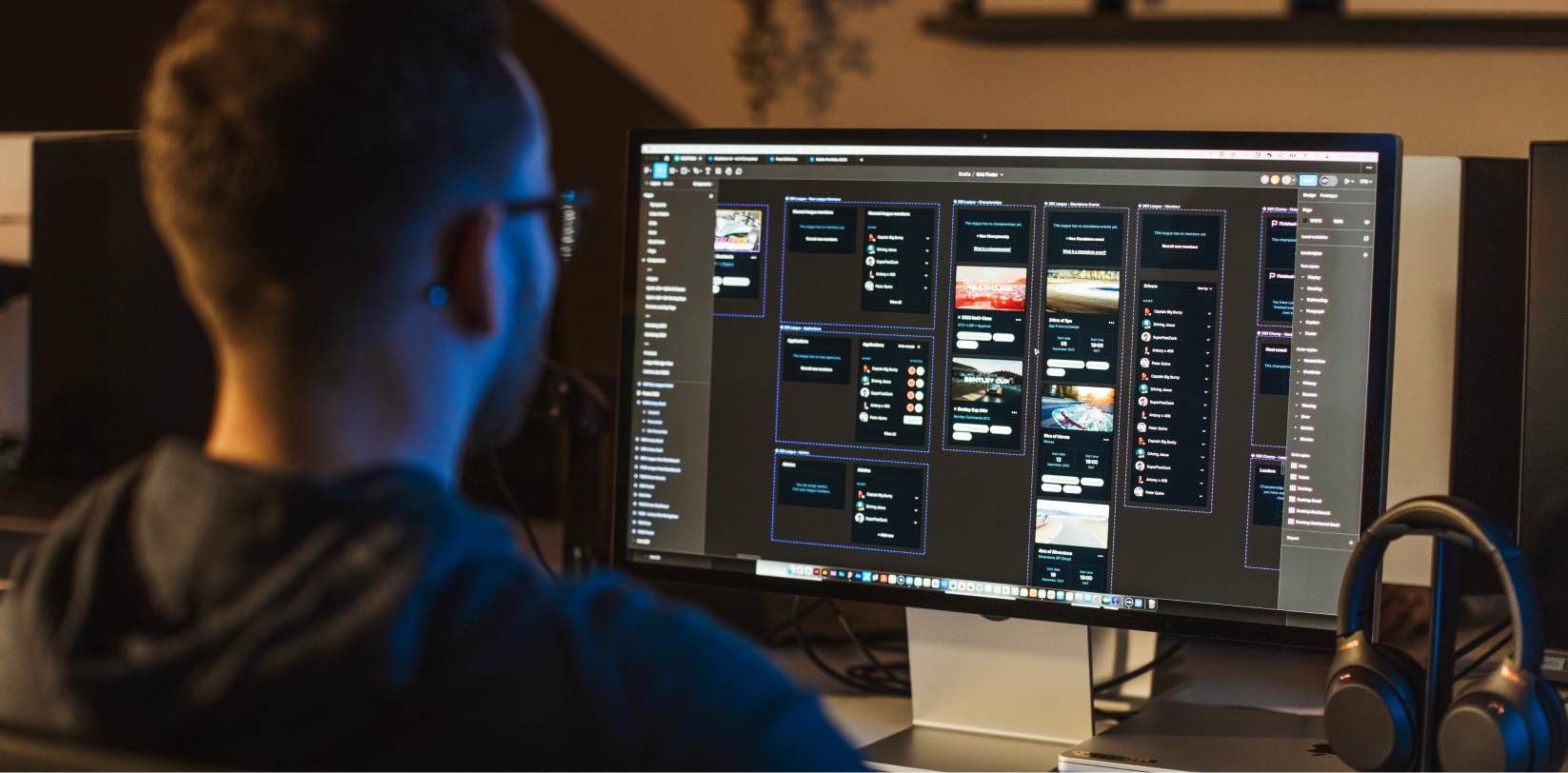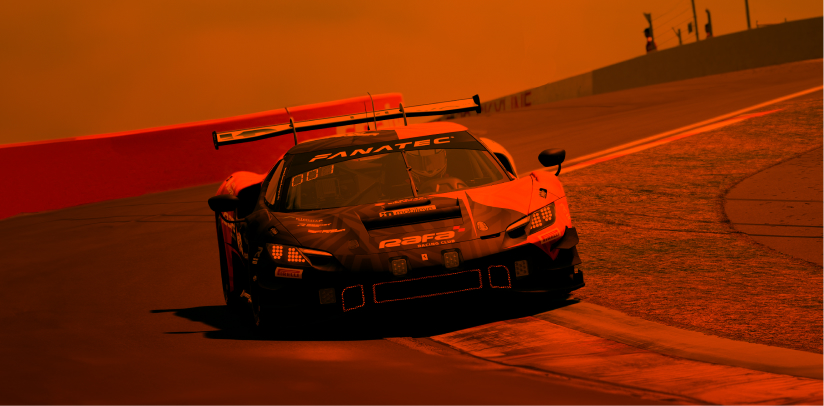In this article, we asked our Director, Matt, what he has learned over the past year as a Creative Director & Product Designer for a start-up gaming company.
Read his journey and stay tuned for further updates on his collaboration with the company ↓
Some of you, well majority of you, may be wondering who I am and why I am writing this post. For the past year alongside running my creative agency Mattix Design, I’ve been working as a Creative Director and Product Designer at a start-up sim racing company called Grid Finder which was founded in 2020. Over the past year I’ve been part of a team which has grown from a start-up company to being acquired in a multi-million acquisition deal in 2023. Hopefully you’ll find this blog useful and maybe I’ll write an update in a year and see where we are!
So here goes.
Becoming a Creative Director.
Before taking on the role as the Creative Director at Grid Finder my previous focus has been more of a UI/UX approach. I’ve worked on e-commerce sites like Opera Beds, a company known for premium adjustable beds and mattresses in care, hospitality, and consumer sectors since 2004. By improving their website, we helped in boosting their online revenue by 105.6% YoY.
I also focused on lead generation sites like Premier Modular. This company, with a turnover of £130 million, has been providing rented and permanent modular buildings to different sectors for nearly seven decades. It’s widely known as a leader in the industry. With our help, Premier have 133% increased traffic to their website year-on-year, have over 200 enquiry goals completed month-to-month and are ranked #1 on Google for their primary search terms.
Something I had to change was my perspective and approach to this role, this wasn’t just creating a website, it was creating a digital product which would be used by several very different audience groups.
When approaching this role, first on my list was to understand what Grid Finder was doing well and where they needed improvement. I wanted to know not only the overall business goals but also what the development and marketing teams were aiming for. When I joined, it was clear that the company wanted to be a leader in the industry, but the branding wasn’t helping with that goal. It lacked refinement and consistency, and there were issues with the overall user experience of the platform. Since I specialise in UI/UX, I knew I had to improve these aspects and shift the focus to a more user-friendly approach to meet our goal of leading in the industry.
I was tasked with making things better by finding a middle ground that would please different groups of people using our platform. This included casual gamers, professional sim racers, esports drivers, league managers, and broadcasters. The goal was to make sure our approach matched the needs of each group.
From UX Designer to Product Designer, how is it different and how to adapt to each role.
Transitioning from a UX Designer to a Product Designer involves recognising the subtle differences in focus and skill sets. As a UX Designer, my primary emphasis was on refining user experiences through research and prototyping, prioritising user needs. Shifting to a Product Designer role means adopting a more comprehensive perspective, balancing user needs with business goals, and collaborating with the teams.
Summary of a UX Designer: A UX designer focuses on enhancing user satisfaction by improving usability, accessibility, and interaction between the user and the product. They focus on creating seamless and meaningful experiences. Their work influences the entire process of acquiring and integrating the product, including branding, design, usability, and function.
Summary of a Product Designer: A product designer is someone who leads or is part of the team that creates a new product or makes an existing one better. They take care of the entire design process. This professional works in cross-functional teams to address technical constraints and ensure usability from ideation to production. Ultimately, they significantly contribute to the overall product experience beyond its visual appeal.
Similarities between both roles are they want to understand their users needs and behaviours as well as designing and developing prototypes. UX design and product design both prioritise users, involve collaboration, prototyping, and iterative processes.
But the distinction between these roles lies in how product design collaborates with developers, project managers, and other team members. Product designers ensure that everyone is on the right track, maintaining a user-centric design approach that consistently aims to improve the overall user experience.

Striking the right balance: Navigating between community and commercial decisions and how to prioritise one over the other.
For the past year as a product designer I was involved with mapping out information architecture, this involves defining every avenue and path that users can take through an app or website, user research which involved engaging with testers and observing their journey with the task in hand that’s been given to them.
Knowing what features were important to the stakeholders and knowing when the right time was to build it and gaining feedback from the ‘tribe’. Seth Godin describes the tribe as a group of people connected to one another, they only need two things to be a tribe: a shared interest and a way to communicate. Myself and the team would take their feedback onboard and input changes that are necessary. My main priority was to design the flows of the platform and create the prototype to pass over to the development team.
When it comes to sending over the prototype to the development team I need to make it as smooth as possible. Collaboration requires effective tools and methods to facilitate communication, feedback and iteration. Using various platforms and software to share your work, collect input and track progress. For example we use Figma which allows teams to comment on the designs and prototyping. When I prototype Grid Finder features and pages, I will make sure I comment links to animations/examples which show the developers how I see the element working.
Understanding others’ capabilities and helping when needed, or asking for their help when you come across an issue is a great asset to have in a team, understanding one another will make you stronger.
What leading with optimism really looks like.
Another thing I’ve learnt over the past year is seeing how optimistic leaders are better at helping their organisation respond and adapt to changing circumstances, especially where the need for change was from stakeholders. Grid Finder’s CEO, Tom, is a great example of this, someone who drives the team forward, and fostered an environment which allowed the team anonymity over their work. Clear expectations were set and we knew the tasks at hand and their deadlines. It was clear that Tom’s trust in the team and this way of working ultimately led to the best results and enabled fantastic work culture.
Seth Godin is an author and marketing strategist, he writes about everything from marketing strategy to human behaviour. He often takes unconventional stances on marketing trends, like the idea of “permission” marketing, which is letting your customers know what you’re up to before you do it. But a quote he uses which I think best describes Tom’s approach is;
“Leadership is very much an art, one that’s accomplished only by people with authentic generosity and a visceral connection to their tribe. Leadership is not for the faint of heart. It requires commitment. And if you don’t commit to your dream, no one else will.”
Once your mindset changes, everything on the outside will change along with it.
Nothing is better than perfect right? It’s very tempting to strive for perfection when you’re working on a project you are passionate about, but this mindset I had to change. Perfection can be the enemy of the good if it keeps you from completing your work or making your goals a reality. While it might seem like it’s helpful to hold yourself to a high standard, a harsh inner critic doesn’t benefit anyone and it’s even more difficult when you’re working alongside other teams.
Something I’ve learned over this past year is that your team can help you see things from another perspective. There’s no point sitting there for hours just staring at your screen trying to figure out something, just ask someone. They will either spot something you can’t see or have another suggestion which may make the process quicker and easier for you, and ultimately lead to a better end product. This is especially important when facing mind block. When you’re stuck and can’t seem to find a way forward, your team can provide fresh insights and break through the mental barriers that might be holding you back. Collaborating with others not only helps overcome obstacles but also fosters a more creative and dynamic working environment.
Learning what level of perfection is required in a task has been crucial for me. I’ve come to realise that many tasks don’t demand massive amounts of effort or perfection to be valuable initially. Sometimes, embracing the idea that ‘simple and done’ is better than ‘perfect and unfinished’ is key. It’s important to me to avoid getting trapped in the details or give in to the fear of failure. Recognising that perfection isn’t always the goal has allowed me to appreciate the value of completing tasks and moving forward, even if they aren’t flawless. You may have the flexibility to revisit and update features, ensuring continuous improvement for the platform and an enhanced experience for its users.

So, what have the team achieved over the past year?
With these skills I have learnt and having a great team to work with, these are some of the things we have achieved this year at Grid Finder;
Grid Finder is the most feature-rich and comprehensive platform in the industry, catering for all online racing needs, not just drivers. Grid Finder is the home for communities, league managers, livery designers, broadcasters, commentators, stewards and coaches.
Over the past year Grid Finder has achieved strategic partnerships with Porsche Motorsport North America, Elgato, Varjo, RAFA Racing and World Online Racing, to name a few.
Over 3,000 league managers have chosen Grid Finder to be the home for their sim racing communities.
90k drivers land on our site, looking for regular, organised, and competitive online racing every month.
Grid Finder’s podcast series, Sim Sundays, has increased in popularity on Spotify and YouTube, it has allowed conversations with streamers such as Rory Alexander, Super GT, James Baldwin and the Red Bull Esports team which also allowed the opportunity to visit the Red Bull Factory. In 2023, the Grid Finder esports team qualified for SRO Esports which allowed the team to travel the world competing in one of the highest levels of Sim Racing Esports which was hosted alongside the real world WEC GT Series.
All this has led to Grid Finder’s multi-million pound acquisition deal to RAFA Racing Club in just three years. The Grid Finder team plans to scale the platform throughout 2024, providing more tools for sim racers, league managers and creators. In addition, the team will become pivotal in building tech capability across the whole of the RAFA family of brands.
Would you like to know more about how you can make your brand stand out online? Get in touch with a member of our team today.
READY FOR US TO DELIVER?
Call us on 01482 755303

